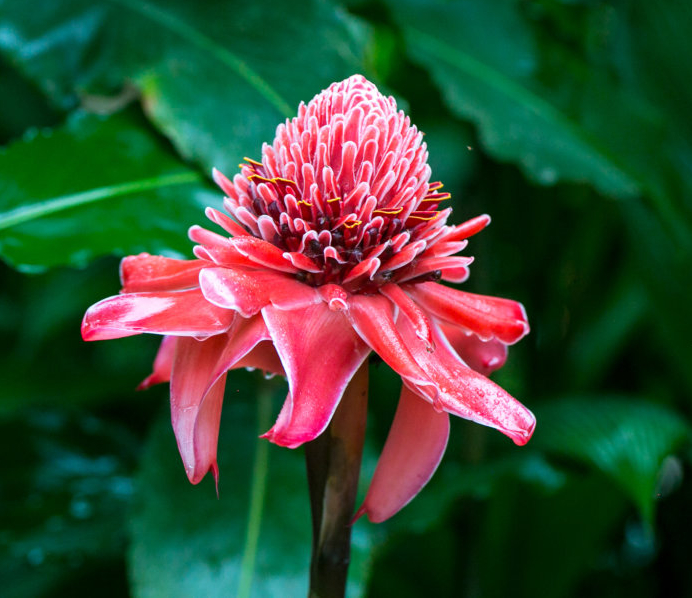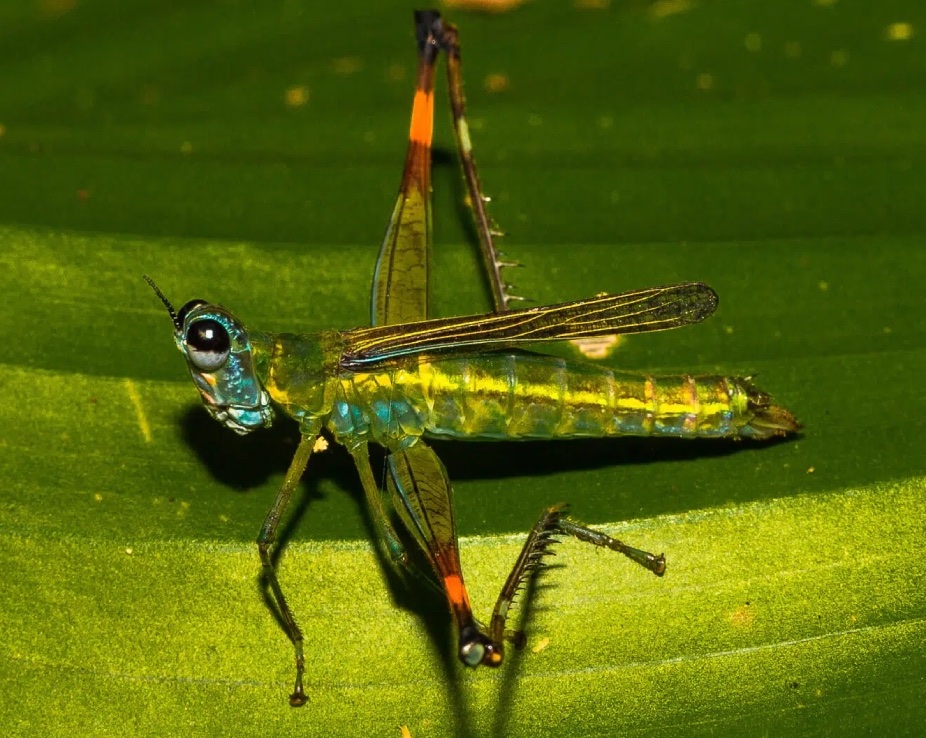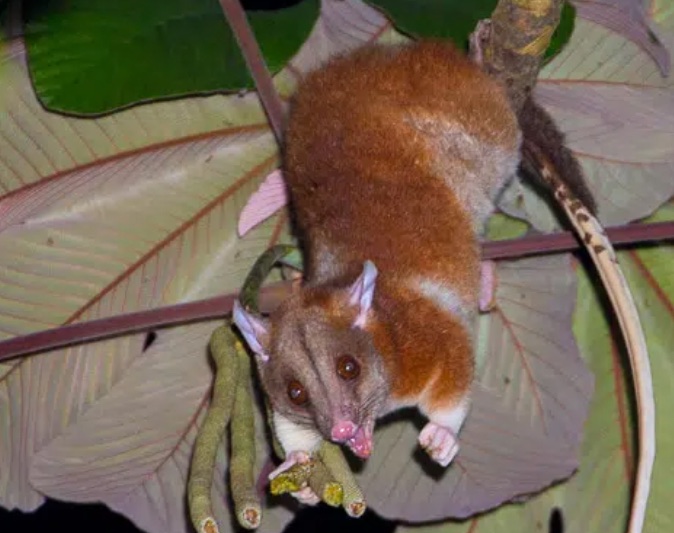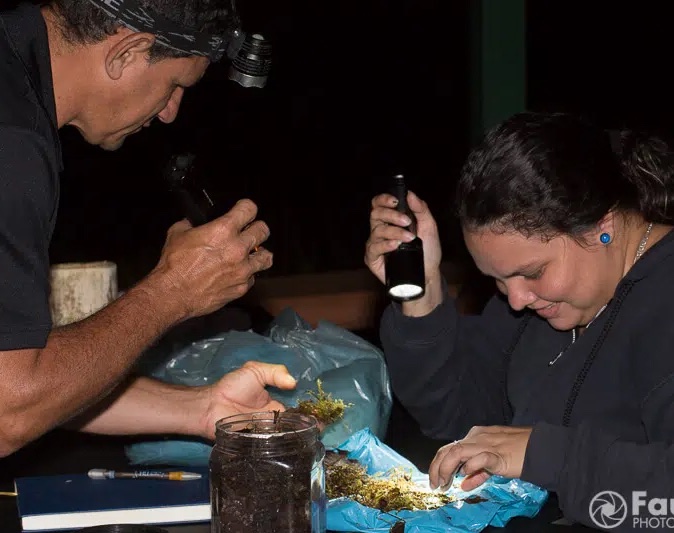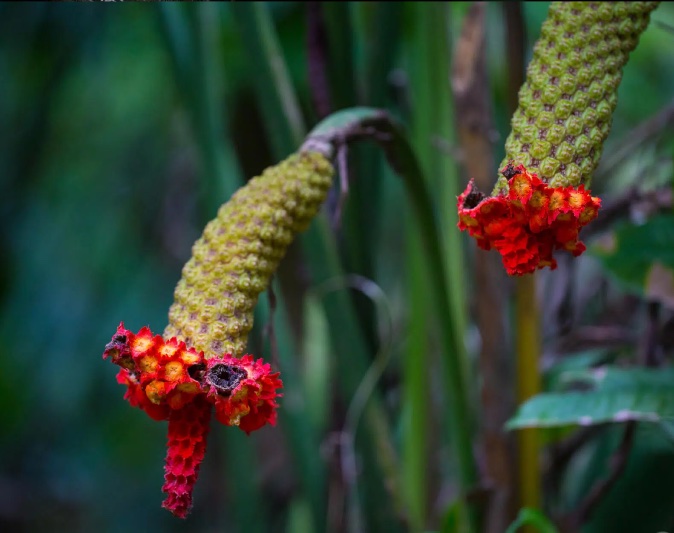TROPENWÄLDER
Unique and versatileImpenetrable green, plenty of rain and the secret eyes of the jaguar.
What we initially associate with the keyword tropical forest is often only a very small part of the real situation. Reality often looks very different: Very different – but also much more exciting and diverse than our imagination!
Summer and winter: Always nice and warm!
In the tropical regions around the equator, there are no seasons as we know them from Central Europe. A day – whether summer or winter – always lasts around twelve hours. The seasonal temperature fluctuations are often smaller than those between day and night. This is referred to as the “daytime climate”. The amount and frequency of precipitation here determine the activity rhythms of plants and animals – quite unlike here, where temperatures and photoperiod are decisive.
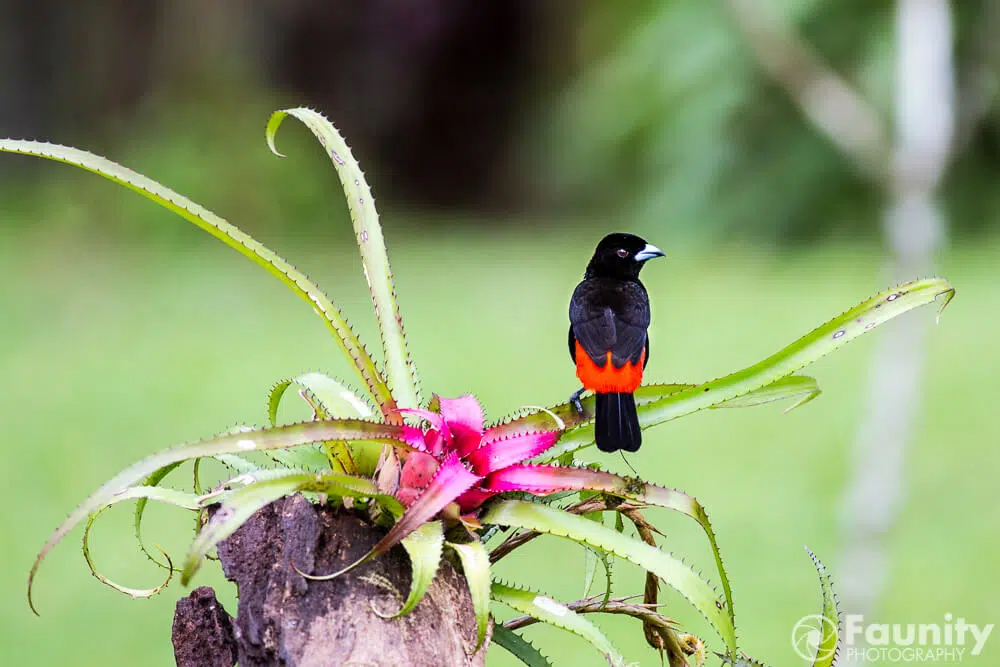
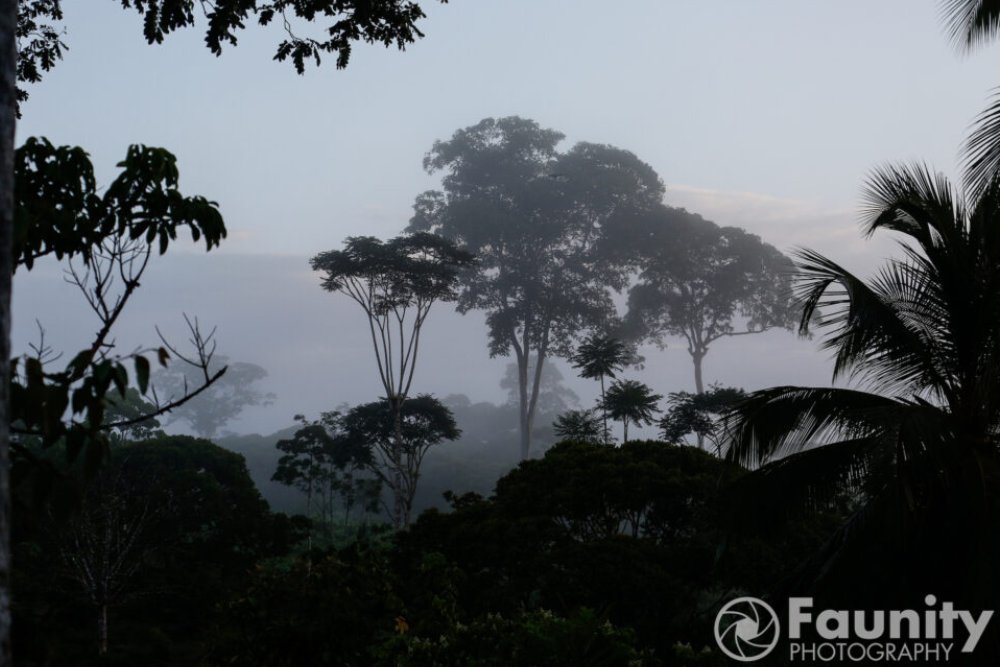
Geographical differences
Tropical rainforests can be found in Central and South America, Africa, Southeast Asia and Australia. Although they differ in their species composition, the forest structure and ecology are similar in all areas. The typical tropical lowland rainforest can only be found up to an altitude of around six hundred to one thousand meters above sea level. Above this, it is replaced by mountain rainforests and cloud forest formations.
Different types of vegetation
Dense forests are not found everywhere in the tropics! If too little rain falls, savannahs, thorn bushes, grasslands or heat deserts spread instead.
These so-called dry or monsoon forests originally made up a third of all tropical forests. Although they look similar to typical tropical rainforests with their lianas and herbaceous epiphytes, the unfavorable water balance is reflected in a lower trunk height, thicker bark and smaller leaves. The biomass and productivity of tropical dry forests is significantly lower than that of tropical rainforests.
In the ever-humid tropical rainforests, rain falls abundantly and regularly; there are no long dry periods. Evergreen plants from various families compete for light and nutrients. On average, there are sixty to one hundred tree species per hectare of forest – in Central Europe there are just twelve!
This mosaic of trees, the perching plants and climbing palms, the tree shrubs, dense mosses and hanging lichens creates a habitat that is richer in ecological niches than any other on our planet – this is the prerequisite for its unique biodiversity.
Unrivaled biodiversity
Of all terrestrial communities, the tropical rainforest has the greatest biodiversity and is home to possibly as many plant and animal species as all other terrestrial biomes combined. The diversity of its vegetation is discussed as the reason for this richness. Bushes and trees seem to be divided into numerous different levels. Many inhabitants of the tropical rainforest feel particularly at home in the canopy region of the jungle giants.
According to scientific surveys, the diversity of tropical rainforests is decreasing from the central areas to the periphery. It differs from continent to continent. The highest species richness was recorded for the Amazon rainforest, while Africa has the lowest diversity.
However, history is certainly also important for the development of this species richness. Many of the world’s rainforests have existed for millions of years, while others are much younger. Where ice ages occurred, they shrank, only to expand again under the more favorable weather conditions of the interglacials. The resulting isolation into individual forest islands favored the evolution of different species.
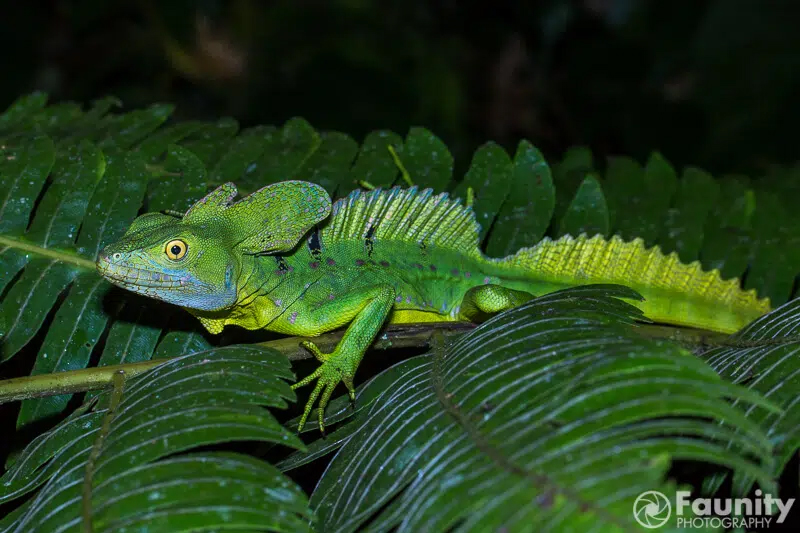
The tropical rainforest – a fragile system
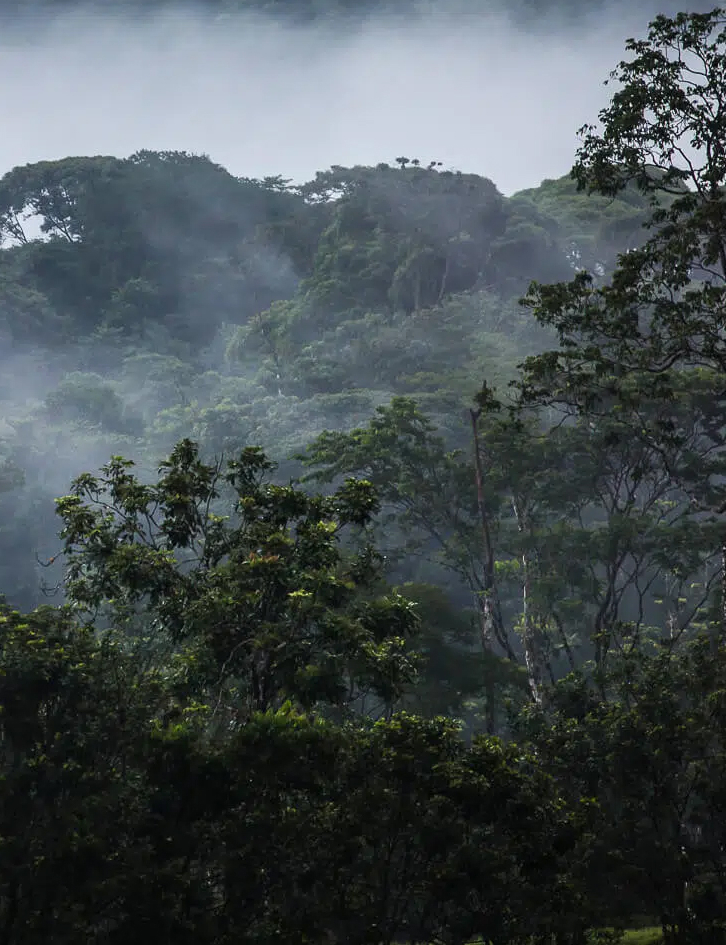
Water cycle
Around half of the precipitation that falls in the rainforests evaporates immediately through the large leaves of the sun-hungry vegetation. The water returns to the atmosphere as vapor, only to soon rain down again as a heavy shower. If deforestation occurs, this water cycle is severely disrupted. Without the closed, highly productive plant cover, much less rain evaporates than before. Precipitation decreases or becomes irregular. However, due to their superficial root system, the trees are dependent on frequent rain and cannot survive long dry periods. The result is the decline of the tropical rainforest – even if individual forest parcels are spared direct destruction through deforestation.

Water cycle
Around half of the precipitation that falls in the rainforests evaporates immediately through the large leaves of the sun-hungry vegetation. The water returns to the atmosphere as vapor, only to soon rain down again as a heavy shower. If deforestation occurs, this water cycle is severely disrupted. Without the closed, highly productive plant cover, much less rain evaporates than before. Precipitation decreases or becomes irregular. However, due to their superficial root system, the trees are dependent on frequent rain and cannot survive long dry periods. The result is the decline of the tropical rainforest – even if individual forest parcels are spared direct destruction through deforestation.
Nutrient cycle
Especially in the humid tropics, the forest differs from that of the northern temperate zone. In regions with cold seasons, a large proportion of the organic matter and available nutrients are stored in humus or sediment. In the warm tropics, a much larger proportion of it is found in the biomass, i.e. primarily in the vegetation of the plants. In a series of biological adaptations, it is constantly and rapidly implemented within the system.
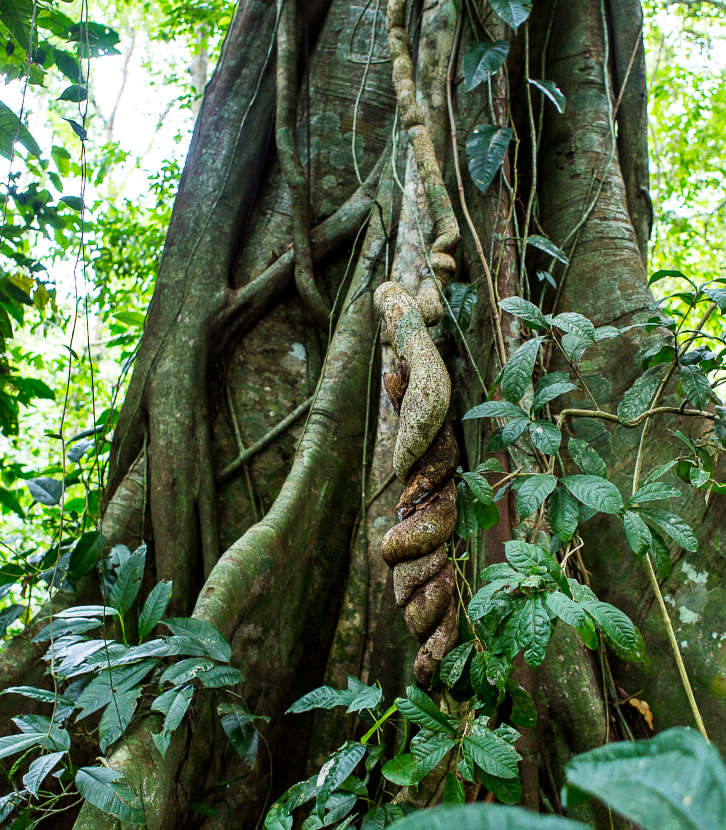
Optimal use of limited nutrients
The root network of the tropical rainforest is extremely dense and shallow. This allows the trees to almost immediately absorb the few available nutrients that are released by the rapid decomposition of dead organic matter. The soil therefore serves less to nourish the forest, as we know it from our latitudes, and more for mechanical fortification. The mighty board roots of some jungle giants bear witness to this …

Optimal use of limited nutrients
The root network of the tropical rainforest is extremely dense and shallow. This allows the trees to almost immediately absorb the few available nutrients that are released by the rapid decomposition of dead organic matter. The soil therefore serves less to nourish the forest, as we know it from our latitudes, and more for mechanical fortification. The mighty board roots of some jungle giants bear witness to this …
Consequences of the destruction
If a forest in the temperate zone is cut down, the soil largely retains its nutrients and structure and can be cultivated for many years. The winter frost helps to fix the nutrients and suppress diseases and parasites. In tropical forests, on the other hand, deforestation destroys the soil’s ability to retain nutrients and combat pests. The available nutrients are lost very quickly through leaching and erosion. For this reason, agricultural cultivation of short-lived, annual plants is often completely unsuitable for tropical regions.
Nothing to see of biodiversity?
Low stock density
Anyone who gets the opportunity to visit a tropical forest is often disappointed at first: there is nothing to be seen of the much-vaunted abundance of species. Hardly a colorful bird and only with a lot of luck a dangerous snake or a larger mammal. The only things that can be found in large quantities are ants and termites.
How can that be? Species richness does not necessarily mean high population densities. Many plant and animal species are represented in a large area with only a few individuals. If you want to see more, you have to venture up into the dizzying heights of the treetops, as a large proportion of the animals spend their lives in the upper layers of the vegetation.
Researchers are trying to explain the phenomenon of the low population density of animal and plant species in tropical forests by the few freely available nutrients. In fact, this could be one reason why, despite the ideal climatic conditions, many tropical forest animals take several years to reach their adult stage and thus sexual maturity. At the same time, unlike their cousins in temperate latitudes, they often have a very low reproductive rate.
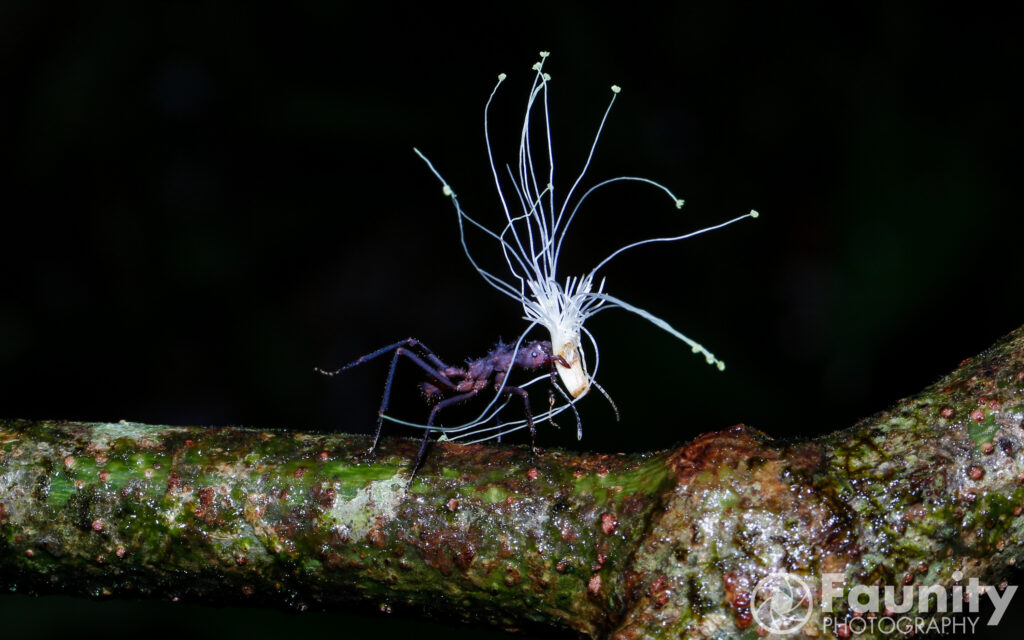
Why protect tropical forests?
The inhabitants of tropical forests are characterized by a great diversity of species and an abundance of very different types of adaptation and rarity. This could be due to the scarcity of resources, which are difficult to utilize; many nutrients are bound up in the lush vegetation. If the delicate balance of these forests is disturbed in one place, this has devastating consequences for the entire system. Reforestation to the original forest type is often impossible.
Originally, twelve percent of the world’s land area was covered by tropical rainforest. In the meantime, far more than half of it has been destroyed by human hands. The resulting loss of biological diversity is particularly tragic. Tropical forests are being destroyed faster than their inhabitants can be taxonomically and ecologically recorded.
We may be destroying important current and potential resources for medicines and food with these forests. We are destroying a genetic pool of wild plants and animals that could preserve and improve our cultivated forms. Last but not least, large-scale destruction of tropical vegetation can contribute to global climate change.
People who have traditionally lived in and from the tropical forest have honored, used and generally preserved the forests and their diversity for thousands of years. With their traditional knowledge, they recognized the value and potential uses of a variety of plants and animals for food and medicine, building materials and clothing, for aroma and enjoyment. Since the 20th century, however, tropical forests have increasingly had to give way where economic interests dominate these considerations. It is therefore always important to give the people who have to live with and from their land an alternative perspective.
